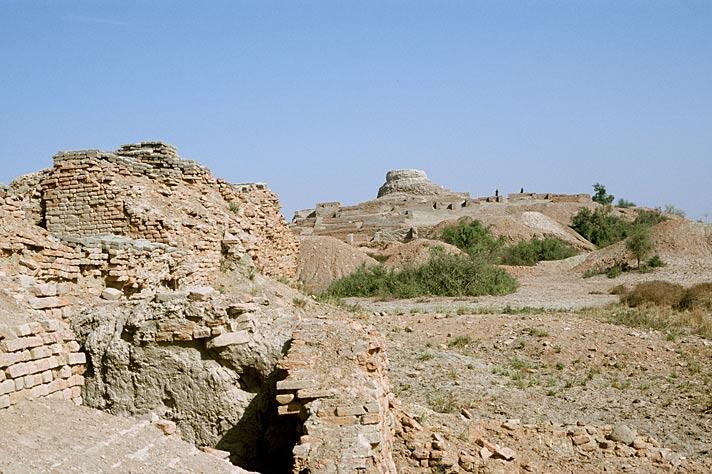Above: Possible Gateway with large brick bastions in foreground, Mohenjo-daro
A detailed analysis of the evolution of Indus Civilization based on a compilation of the latest scientific data by experts. First published in Social Evolution and History, Vol. 10, No. 2, Sept. 2011.
ABSTRACT
The Harappan Civilisation (HC) was spread over large parts of western region of the Indian Subcontinent. Its earliest roots can be found from 7000 BC in Mehrgarh but its peak urban period is around 2500 to 1900 BC. It declined completely by 1300 BC. At its peak, it covered more than 30 per cent of the present landmass of the Indian Subcontinent. The entire evidence for it is archaeologi- cal. It is classified as proto-historic since in the absence of deci- phered written records it is not possible to create a detailed scena- rio of its evolution (Possehl 1999). From archaeological data, the timeline of the HC can be discerned, but the archaeological evi- dence of individual regions is not detailed enough to permit a systematic study of the rise and fall of HC (cf. Wright 2010). However, a lot of work has been done to understand other cultures and their evolution.
We compare the knowledge on the evolution of other cultures (Snooks 2002) and evaluate the archaeological and other data available for HC based on ten parameters (Murdock and Provost 1973) to create a possible scenario of the evolution of the Harap- pan Civilization (HC). We show that the pattern of HC can be di- vided into 4 major phases. The first three phases mark an increase in the standard of living triggered by the arrival of a specific orga- nizational change while the fourth phase is marked by a decline due to the failure of the society to solve the problem of increasing needs of the civilization because of the delay in arrival of new technologies.

